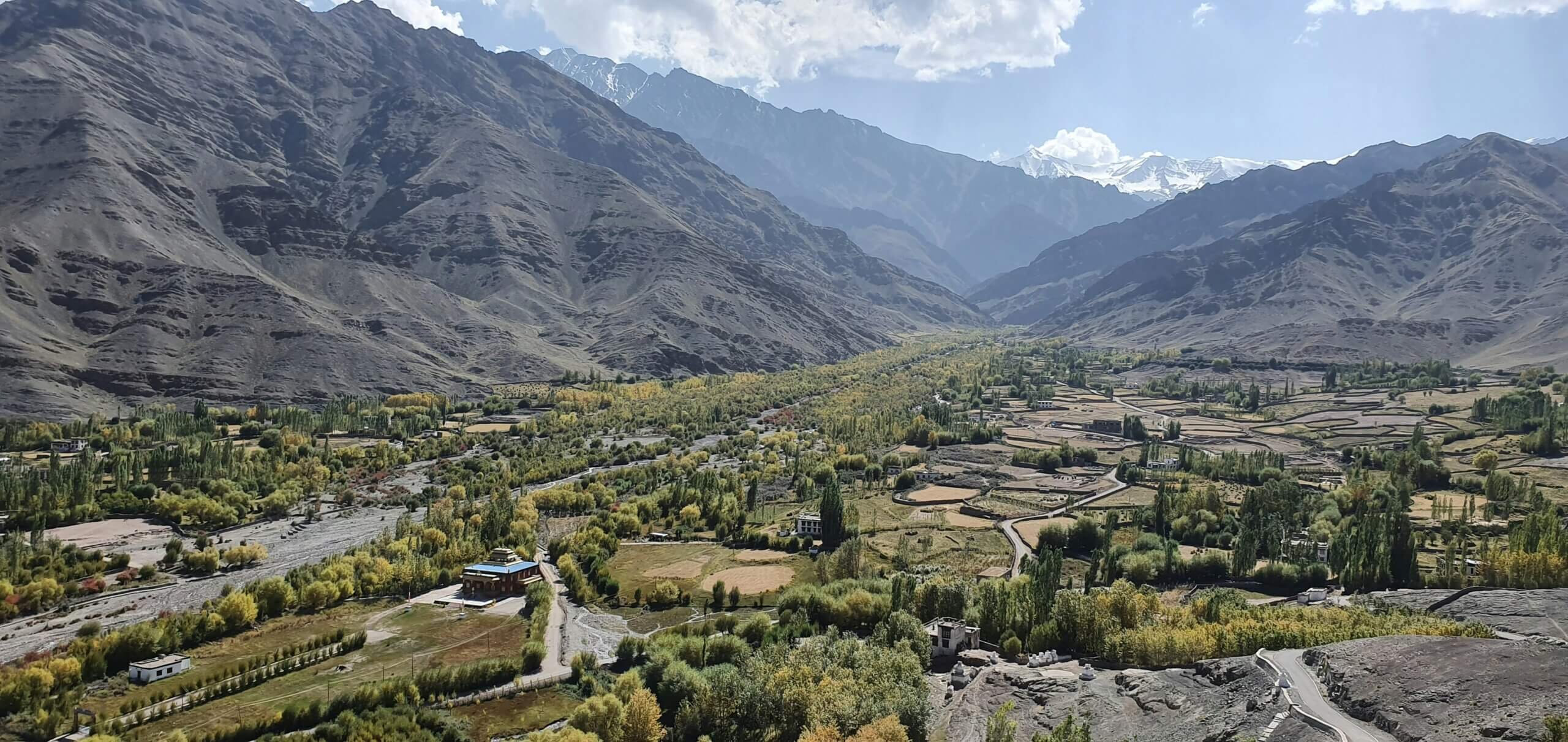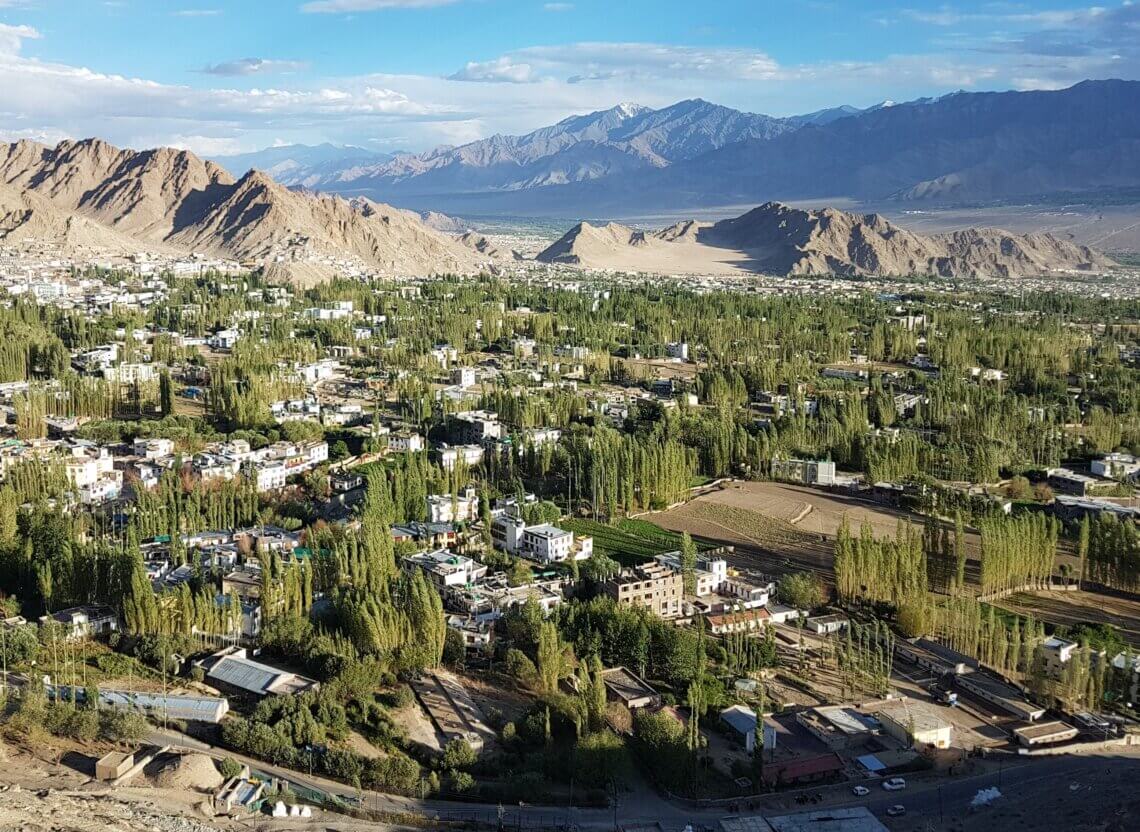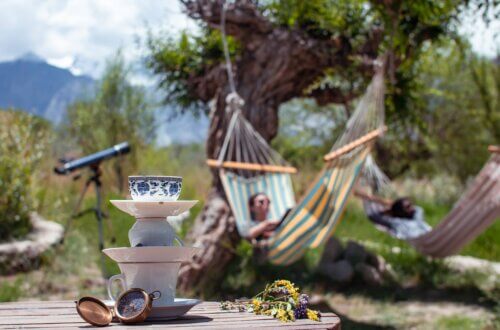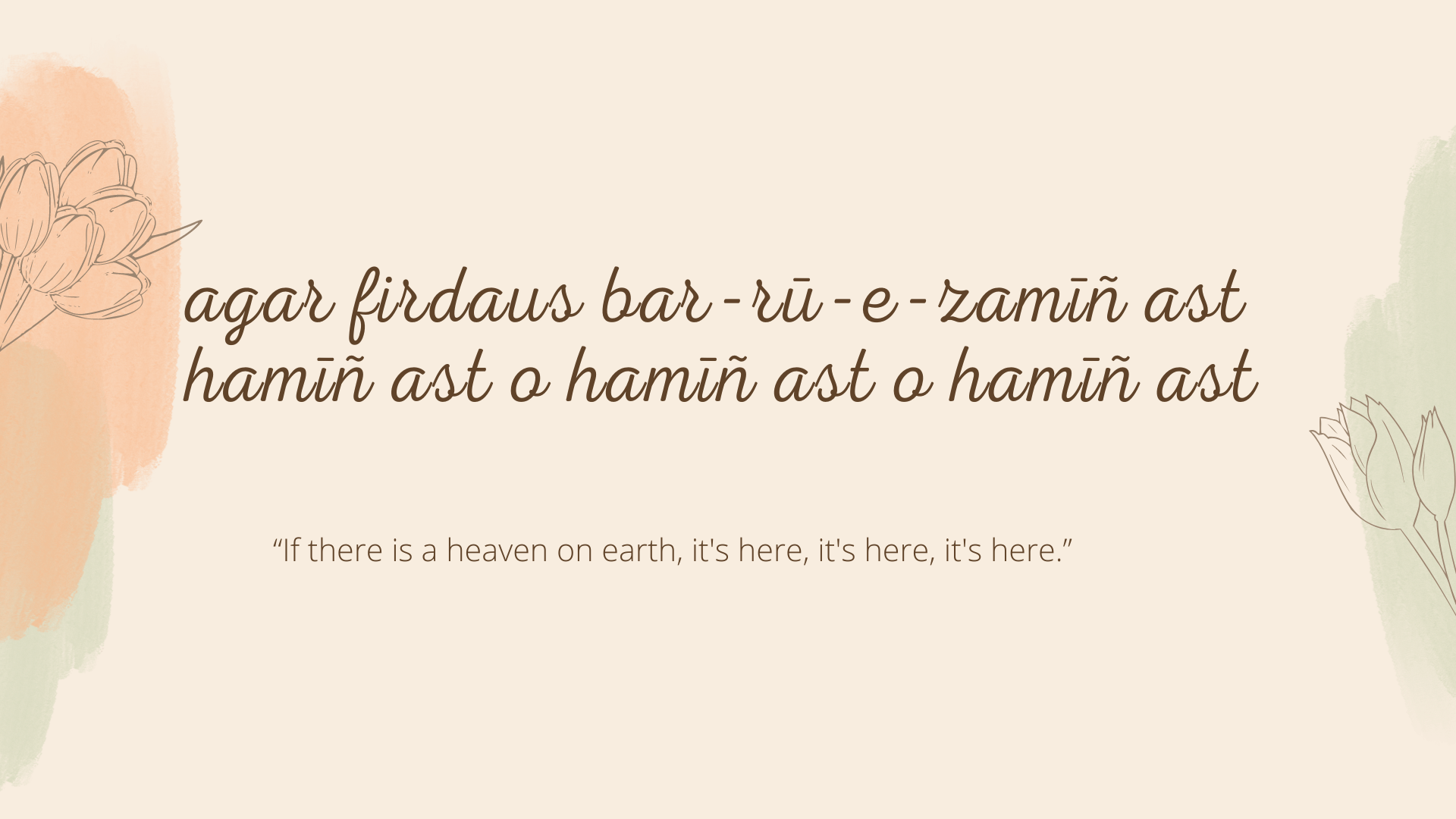Leh was the capital of Ladakh back in the day when the Himalayan kingdom was a crucial stopover for traders traveling between India, Tibet, and China. While Leh, the town itself has several fascinating experiences to offer, when you move slightly away from the main town to what you’d, in city dwellers’, terms call the outskirts or downtown, you are greeted with little hamlets, each of which might have a story to tell. Amongst the many villages you can visit, we feel you just mustn’t miss these three –
Matho
Somewhere along the foothills of Matho Kangri, in the mouth of a deep gorge running out of the Zanskar Range and across the Indus, lies Matho. Although located near Leh City, the village is still among the least visited places in the region. Its namesake, Matho Monastery, is an example of the rare Sakyapa sect of Tibetan Buddhism. During the monastery’s annual Oracle Matho Nagrang Festival, two oracles believed to be seated in human forms predict the prosperity of the local communities for the coming year.

Apart from the unique embodiment of faith and hope practiced here, the monks, villagers, and volunteers from across the globe work meticulously to restore the lost art of the thangka (prayer flag) painting. You must try a ride to Matho Monastery from Leh on a bicycle or Royal Enfield motorbike and scale down to the village. A picnic lunch can be a fun inclusion as well.
Stok
Stok is one of the many Ladakhi villages that bring alive a way of life that has yet to see much change over centuries. It is a green and fertile valley of the Stok Chu River. Strolling in the village, you’ll see white-washed Chortens and mud-brick homes strewn across barley fields. Almost every household has a piece of cultivated land right next door, which they mark with high mud-brick walls.

Planting poplar and willow trees on the edges of the field is both cultural and practical for the villagers here. They add to the beauty of the landscape, mark the perimeter, and provide timber for building and heat during the stern winter months. Have a cup of steaming butter tea or a glass of Chhaang (local barley beer) at a village home. You’ll go, gaga.
Basgo
Basgo’s strategic location at the juncture of Upper and Lower Ladakh was a pivotal part of the Silk Route. Traders used this as a pit stop and a staging point for their caravans. The remnants of the thriving erstwhile city – its ancient fort, royal palace, administrators’ residences, chortens, and three Maitreya Buddha monasteries built in the 16th century – today, sit in ruins at the edge of the barren plateau. In the village below, the people are dedicated to preserving whatever is left of the once-rich heritage.

From traditional techniques of managing and conserving their built heritage to initiating restorative efforts, they have been on a committed journey for decades. The three temples were listed in the World Monuments Watch list of the Hundred Most Endangered Sites (2000). The villagers’ heritage conservation efforts bagged them the UNESCO Asia Pacific Heritage Award of Excellence (2007).
Leh is the gateway to many wonderful places in Ladakh. The region opens up for visitors in the summers and returns to its cocoon in winter. And even in the summer months, different parts of Ladakh have different experiences. You will only be scratching the surface of this unique destination if you stay in Leh. At Travel Scope India, we strive to go beyond the beaten track and help you discover newer horizons during your travels. And if we can organize an enjoyable journey for you, we find an inexplicable joy, something you feel when sitting in a monastery in Ladakh!
Click here to view a sample itinerary for Ladakh.




